
Shortly after entering a modest backwater off the upper Mississippi River, Drew Cook blew right past what appeared to be a sweet little pocket of matted grass, pads and duckweed, only to run another 20 yards and stop on a similar-looking spot.
Since deciding to stop second-guessing professional anglers, my life has become much happier. Nevertheless, that hasn’t quelled my inquisitive nature, so I asked, “Why?”
Cooks’ analysis defined the kind of discernment that hastens efficiency and helps anglers maximize backwater potential.
“The way the current washes through, I feel like this pocket will get the best (exposure),” he said. “You can see by the way the channel bends through here. It will hit one point, then the next and the pockets that are right next to the flow get the most baitfish, and they stay the most oxygenated.”
Solid perspective to launch a discussion of backwater potential. From shallow sloughs winding off the Upper Mississippi River, to weed-choked Louisiana bayous, to various ditches and small creeks reaching off the main runs. These second-fiddle fisheries deserve their moment in the spotlight.
A backwater is a backwater no matter where you’re fishing, but a handful of principles determine the opportunity level.
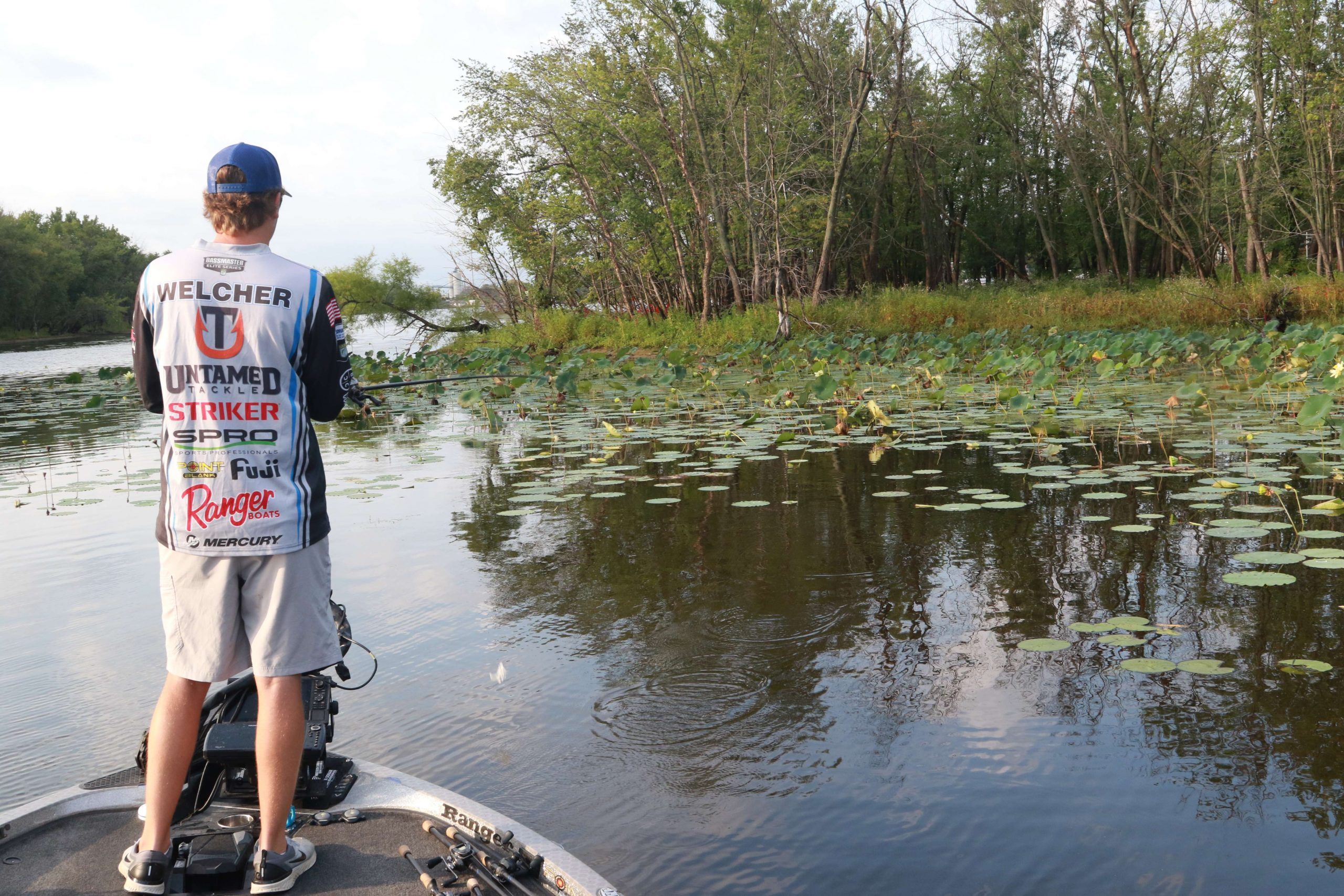
What to look for
Of all the relevant backwater features, depth defines the logical starting point. A stagnant slough with little more than glorified mud puddles and a high pucker factor (look it up) merits less time than a broad backwater with a consistently navigable channel and lots of fish-attracting contour variances.
This proves particularly relevant on tidal waters, as falling tides may drain the backwater to a point of navigational concern. When in doubt, explore on rising water and know when the tide will turn. Press too far and you could find that shallow bar or wood-strewn flat you eased across is now working on its tan and blocking your exit.
Beyond the accessibility factor, watch your mapping for pronounced depth variances. During an outing with Elite Kyle Welcher, the Alabama pro pointed out the strategic benefit of a 20-foot hole that swung up close to a 4-foot flat with small pad clusters.
“There are places they live and places they eat,” Welcher explained. “The fish have the security of that deep water, but when they get hungry, they can rise up and chase bait on that flat.”
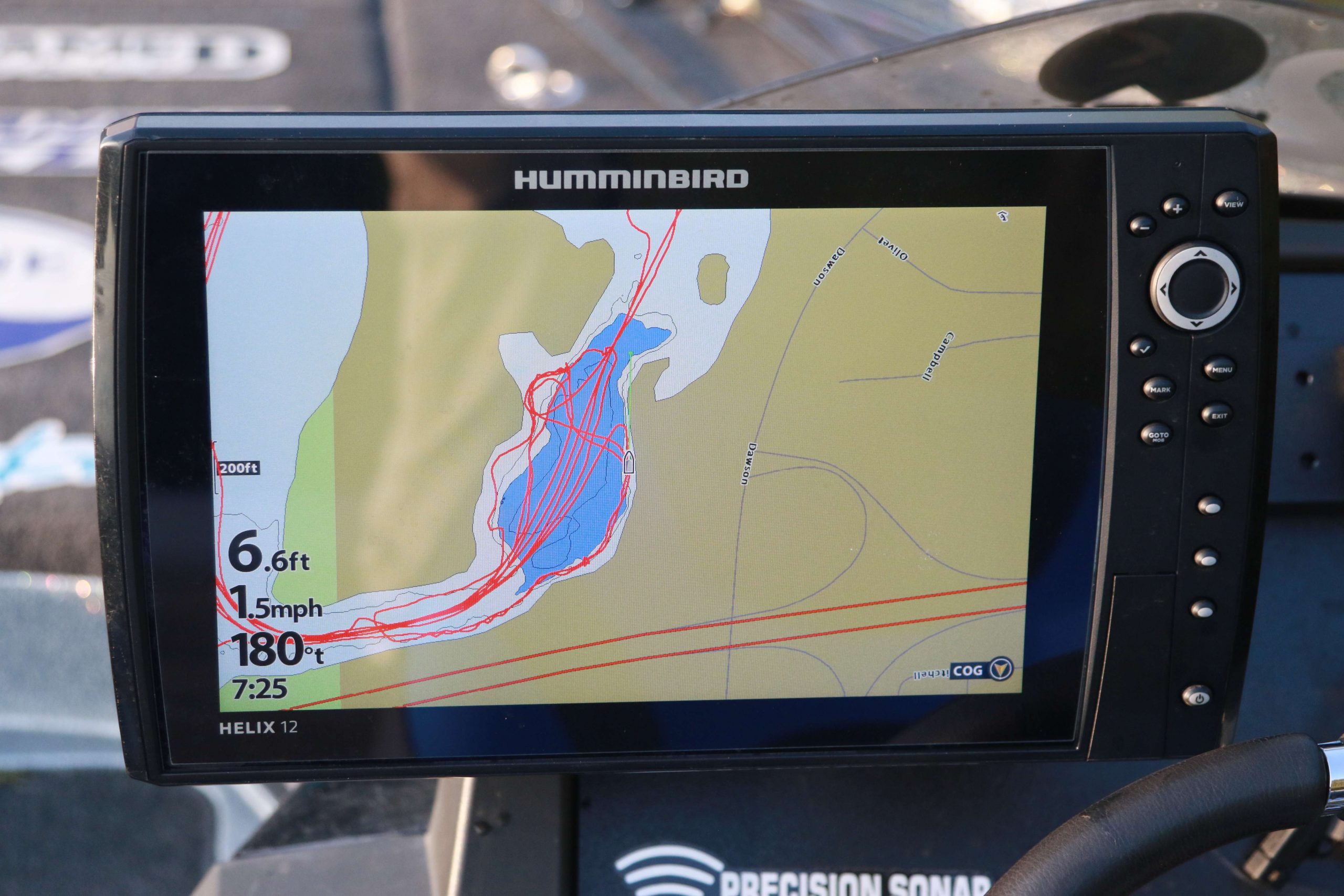
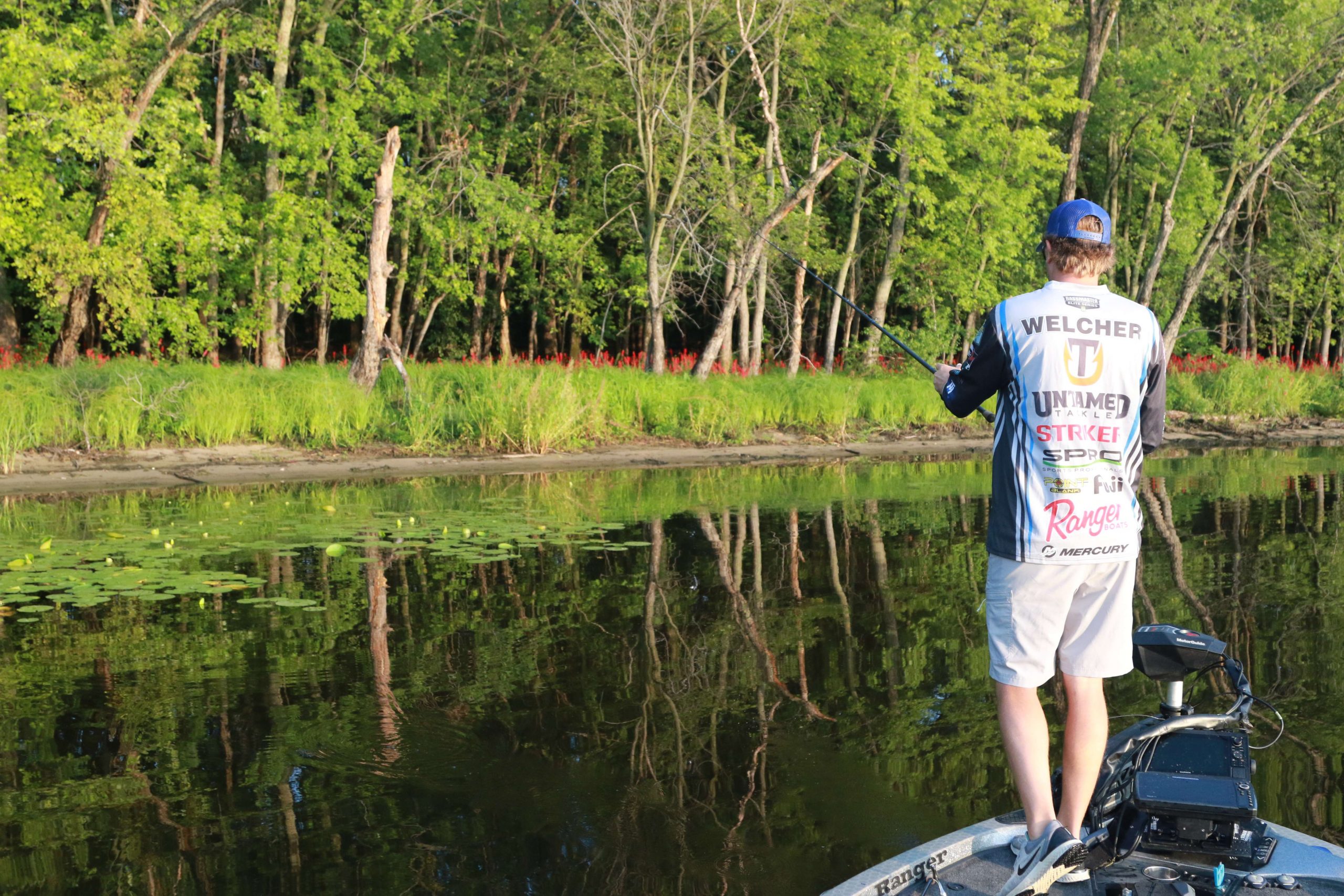
Farther into the backwater that we explored, Welcher slowed his pace, focused on a pad field and found a solid flipping bite. The cover, he said, was helpful, but the spot’s position exemplified a key fall principle.
“That spot was a channel swing bank on the backside of one of the major points in this backwater,” Welcher said. “The lily pads, with some hydrilla and milfoil mixed in, were on the channel side. It was just something unique in that backwater, and a lot of times, it’s better to have a unique spot because the fish are going to continue using it. Whereas with a pattern, you’d have to run a ton of different spots.
“It’s time efficiency, plus big ones tend to use stuff like this. With a pattern, you catch a lot of fish but spots like this seems like a place a big one would be.”
In 2020, Welcher punctuated his Elite debut by plucking a personal best 10-pound, 1-ounce Florida stud from a St. Johns River backwater. This prespawner ate a Texas-rigged Missile Baits D-Bomb under a pennywort mat blown onto a channel swing bank.
Learning to spot key backwater targets will improve your chances of running into a day-maker, or at least, finding those limit-fillers.
Order from the menu: Welcher said he’s not aware of any universal backwater template. Rather, he said success hinges on making the most of what each one offers.
“In my opinion, there’s nothing specific that you’re looking for in a backwater — you kinda treat it like you’re fishing in a pond,” he said. “It doesn’t matter if you see a riprap bank, a couple of docks, a big laydown tree; whatever is there is what you have to fish, because they’re all a little bit different.”
If he has his preference, Welcher wants to see isolated cover, steeper dropoffs and shallow water a little farther off the bank than surrounding areas. One good example is a laydown on a point.
“If a fish on the bank wants to live on that piece of cover, or a fish out in the middle wants to live on it, that’s just a spot that every fish in the area is going to pull up on at some point,” Welcher said. “The farther it sticks off the bank, no matter what the water level is doing, there’s going to be a fish on it all the time.
“If there’s a stump in 2 feet of water, there won’t be fish up there all the time, but if you have a laydown sticking way off a point — even if it’s shallow — it just covers more area and it’s more likely there’s going to be a fish on it.”
Cook adds this: “In the summertime, I focus on the outside channel bends where deeper water comes closer to the bank. In the spring, I want the inside bends where its shallower and less current. That’s good for spawners. It’s also good again in the fall for feeding.”
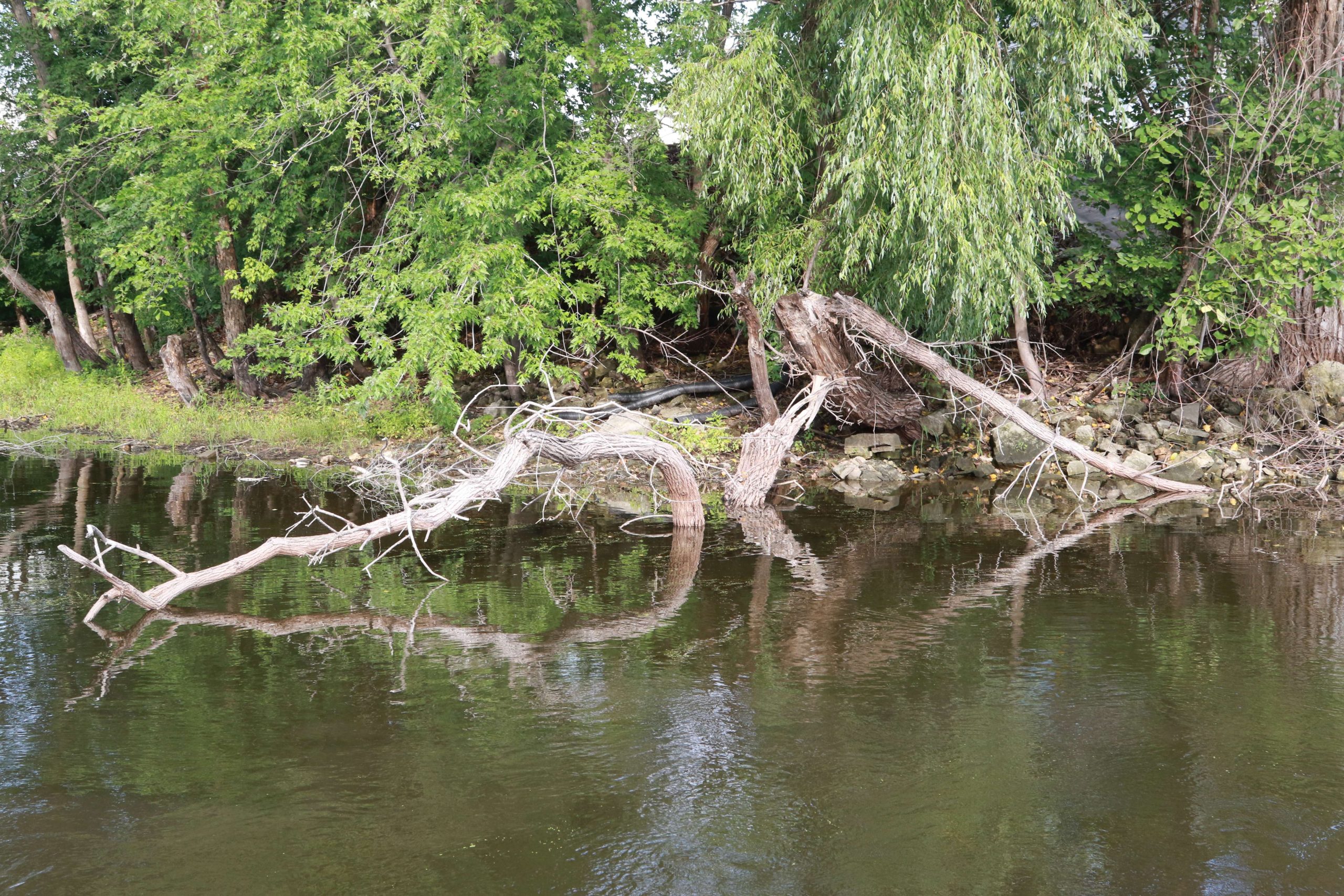
Vegetation: Grass beds area always a plus, but know what you’re looking at. Dense hydrilla, coontail or eel grass can choke out a pocket or small bay to the point of rendering it largely useless to bass. The difference being blended habitat, such as hyacinth, pennywort or lily pads growing amid the dense vegetation, breaking up the top-to-bottom density and creating fishy caverns below.
Milfoil tends to be a more attractive habitat, as its long stalks top out and lay across the surface, with lots of space for bass to roam. When Hydrilla and eel grass grow in clumpy or broken beds, the spaces between are well worth your attention.
A place to sit: Welcher finds that a tidal fishery’s daily ebb and flow varies the water level and moves so much silt through its backwaters that locating a spot with deep, clear water and hard bottom practically guarantees a population of fish. Obviously, this facilitates the spawn, but any solid bottom that doesn’t become turbid in moving water holds year-round appeal.
Angle: Cook likes a north-reaching backwater, especially in the spring, because they tend to remain the cleanest. With most rivers flowing north to south, the often muddy spring water flows right past the opening.
“The water would have to turn backward to reach into the backwater,” Cook said.
Connected: A backwater with two points of connection to the main river or creek benefit from greater opportunity for bait movement, oxygenation and fish reloading.
Manmade structure: Marinas, docks, seawalls, riprap and bridges create the fish-friendly attractions of shade and feeding/ambush spots. Add culverts or any type of outflow point and you have the dynamics of current, oxygenated water, food entry, and typically, a deeper hole or trough where running water carves out the bottom.
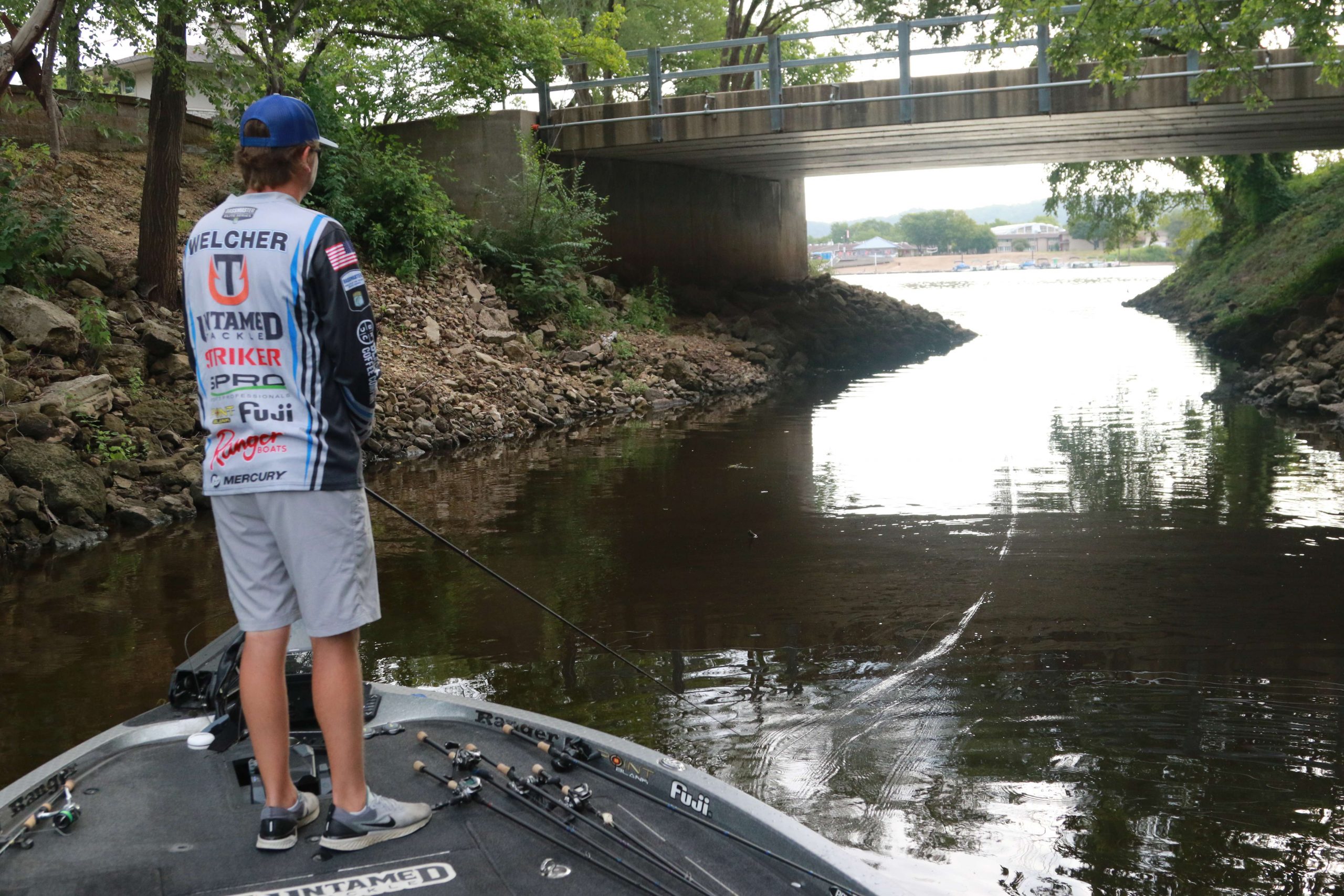
When it’s right
Shallow backwaters are a no-brainer during the spawn, but Cook stresses their year-round relevance (below the ice belt, of course). The main reason is resident fish — bass that don’t migrate, but spend every season in their secluded habitat. As he notes, the farther into a backwater you venture the more likely you’ll encounter residents. Closer to the mouth, there’s more coming-and-going.
“Whenever it gets really tough on the main lake or river, that’s when you want to go into the backwaters and catch the residents,” Welcher said. “It’s not always on fire, but it’s a dependable population. The backwaters are not necessarily better, it’s just that you’re usually fishing them when everything else is worse.”
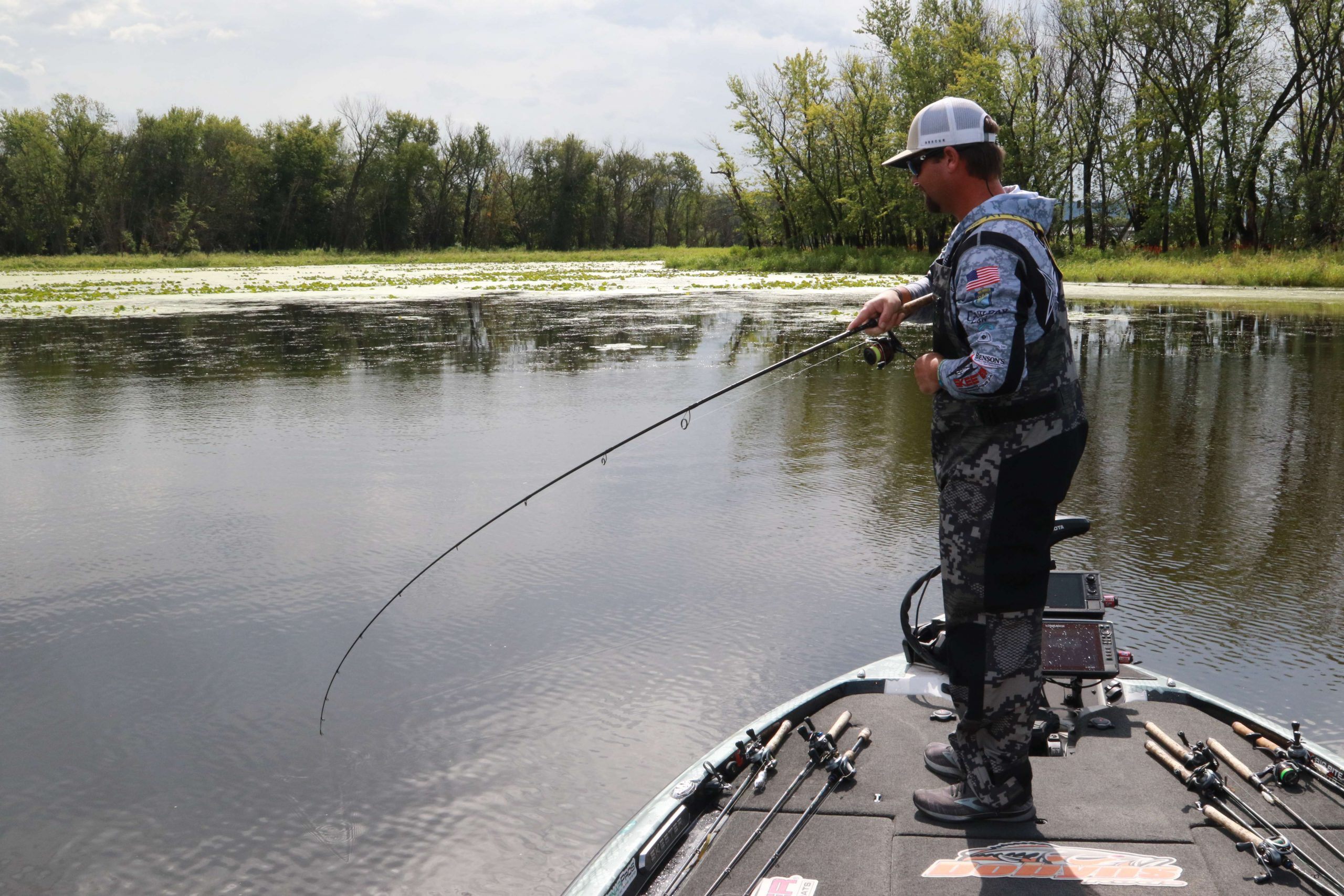
Engagement strategy
Welcher’s backwater bait strategy is simple: Cover the water column. To tempt fish at every depth, he keeps this lineup on his deck:
Flipping: Texas-rigged Missile Baits D-Bomb or Untamed Tackle Ace Jig with a Missile Baits Mini D-Chunk
Squarebill: Spro Fat Papa 55
Vibrating Jig: Z-Man JackHammer ChatterBait with a Missile Baits Shockwave (or a swim jig with a Missile Baits Mini D-Chunk)
Bottom bait: 1/4-ounce shaky head with a Missile Baits Quiver worm
Welcher closes with this advice: “Backwaters are spot-oriented. A lot of times, if you catch a fish off a unique piece of cover, that backwater is not big enough where you can run 15 (similar spots). You might catch three off stumps, but there may not be that many good stumps in there and you’ll have to switch over to grass, rock or whatever’s back there.
“It’s not like you’re running a 25-mile stretch of river and every time the current does something (specific) you can pull over to it.
“Whenever you find a backwater that has depth and a little clarity, there will be fish in there. Don’t go too fast and say, ‘There aren’t any fish in here.’ It’s really about dissecting it, breaking it down and finding out where the fish are that day.”






